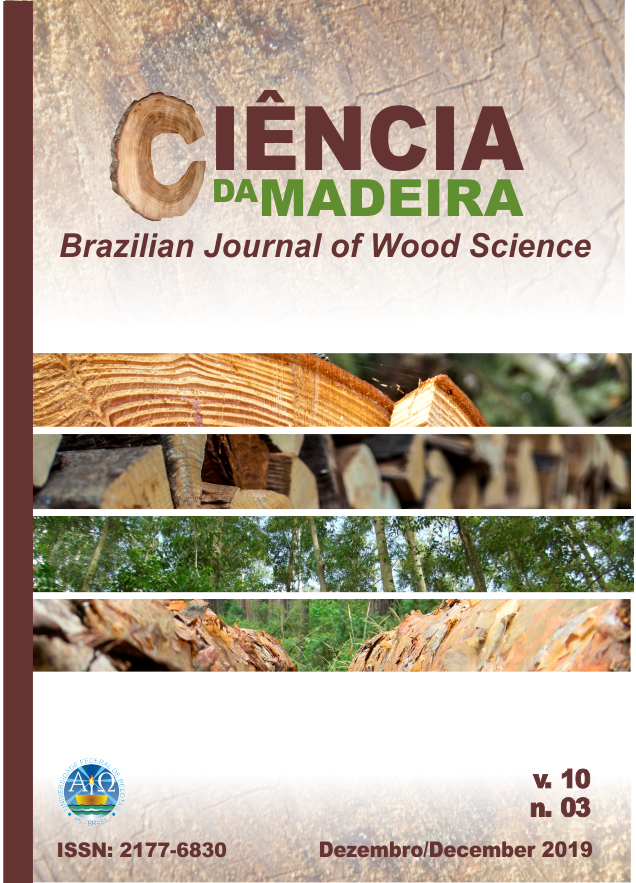Near infrared as an auxiliary tool for wood identification in sacred art in Brazil
Resumo
Appropriate conservation and restoration of historical objects in wood must be done based on an accurate identification of species, which can indicate to the restorer the origin of material and some specificity of these objects. Little samples from nine sacred objects came from an atelier in Minas Gerais state, Brazil. Objects were from collections of churches and were in restoration process. Wood identification was based on macro and microscopic characteristics. Infrared analyses were performed in a spectrometer equipped with an integrating sphere and operating in reflectance mode in a spectral range of 4000-10000 cm-1 with resolution of 4 cm-1. Spectra were obtained directly from all surfaces of samples, without identification of section in a number of 20 by object. Six samples from sacred objects were identified, by anatomic characteristics, as from genus Cedrela P. Browne (Meliaceae). Other three samples were from genera Entandrophragma C.DC. (Meliaceae), Plathymenia Benth. (Fabaceae) and Tilia L. (Malvaceae). Principal differences in anatomic characteristics were observed in distinction of growth rings, porosity and axial parenchyma. Near infrared grouped material with similar characteristics to Cedrela sp. and showed the potential to be applied as an auxiliary tool to anatomical characterization in wood sacred objects identification.
Copyright (c) 2019 Revista Ciência da Madeira (Brazilian Journal of Wood Science)

This work is licensed under a Creative Commons Attribution-NonCommercial-NoDerivatives 4.0 International License.
A CIÊNCIA DA MADEIRA resguarda o direito de modificar o trabalho em quaisquer hipóteses na ordem gramatical e ortográfica com o objetivo de manter a utilização correta da língua portuguesa ou ingles.
A CIÊNCIA DA MADEIRA passa a possuir o direito sobre todos os trabalhos enviados quanto a reprodução e publicação online.



 https://orcid.org/0009-0007-3945-9715
https://orcid.org/0009-0007-3945-9715